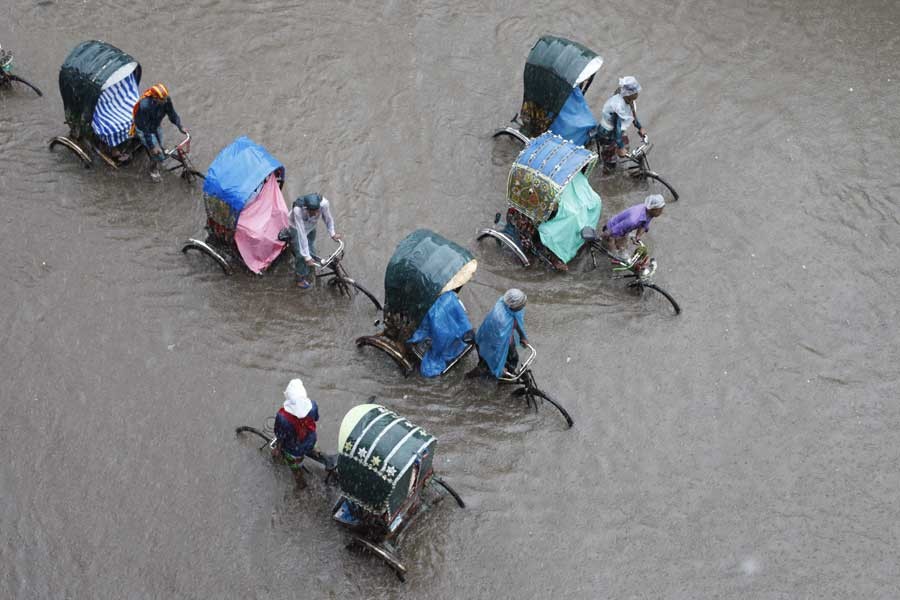With the coming of rainy season, the inhabitant of the capital city would be swamped by a fright of waterlogged roads and avenues. The governmental body that looks after draining of excess water from the city's roads and other spaces, the Dhaka Water and Sewerage Authority (DWASA), is in charge of upkeep of over 475 kilometres of canals, ducts and box culverts of various sizes and shapes. There has been a sense of unease regarding DWASA's preparations for the onset of monsoon; one hopes to be proved wrong there, though. One should add Narayanganj here also because the twin city comes under DWASA's jurisdiction. As media reports go, DWASA hardly did any work on ten of the 26 canals under its control in the outgoing fiscal year, a fact that tends to aggravate the drainage scenario. These ten canals were to be handled separately, five under a different project and the remaining five under DWASA's drainage circle. It seems that bureaucratic complications have slowed down the progress of work. One of the deterring factors has been land acquisition, a traditional hindrance that is at the root of slow pace of all developmental work needing new land. With reportedly only one and a half percent of work done on these ten canals, whose project period ends coming December, it looks rather grim.
This year, however may be different because of the corona virus pandemic. The Planning Commission has let the nation know that less than 60% of total project work of the whole government was completed till last May. The figures would not improve much although offices have been open in June and work going on in case of some mega projects all the time. Coming back to the issues facing DWASA, people would note with appreciation some of the progress that the body has accomplished in matters of water supply and billing. However, it has fallen behind in clearing canals and ducts, although the authorities claim that most work undertaken has been completed. However, its drainage network expansion project tells otherwise. Although the project is scheduled to end next December, only a fifth of total work has been completed so far. It begs the question as to the capacity of the existing body to handle big agendas or indeed whether a separate drainage authority is needed. It is for the policymakers to decide. Could internationally reputed firms be brought in to undertake the work and deliver, if need be?
Gone are the times when Dhaka used to boast not twenty-six, but several times greater number of canals and ducts for passage of excess water. Many of these have been sacrificed cruelly for the expansion of the living space in the city, mostly by unscrupulous land-grabbers. While this was being done, nobody thought about the future. That future has now become the present, a time when one may not only repent for past mistake but do something decisive about it to bounce back. Be that as it may, the canals and ducts that DWASA manages must be cleared and deepened regularly. These cannot be left to one-time project completion activity. This must be a routine job for the simple reason that the many citizens pay scant attention to the conservation of the water outlets. A great portion of their domestic refuse ends up in these canals and ducts, especially in areas where the density of population is more. While a drive is needed to tell the city dwellers about their duty, the DWASA must find ways to complete their project work in time. No ad hocism will do; DWASA must always be on war footing. Dhaka's liveability hinges on its rapid, unfailing success.


